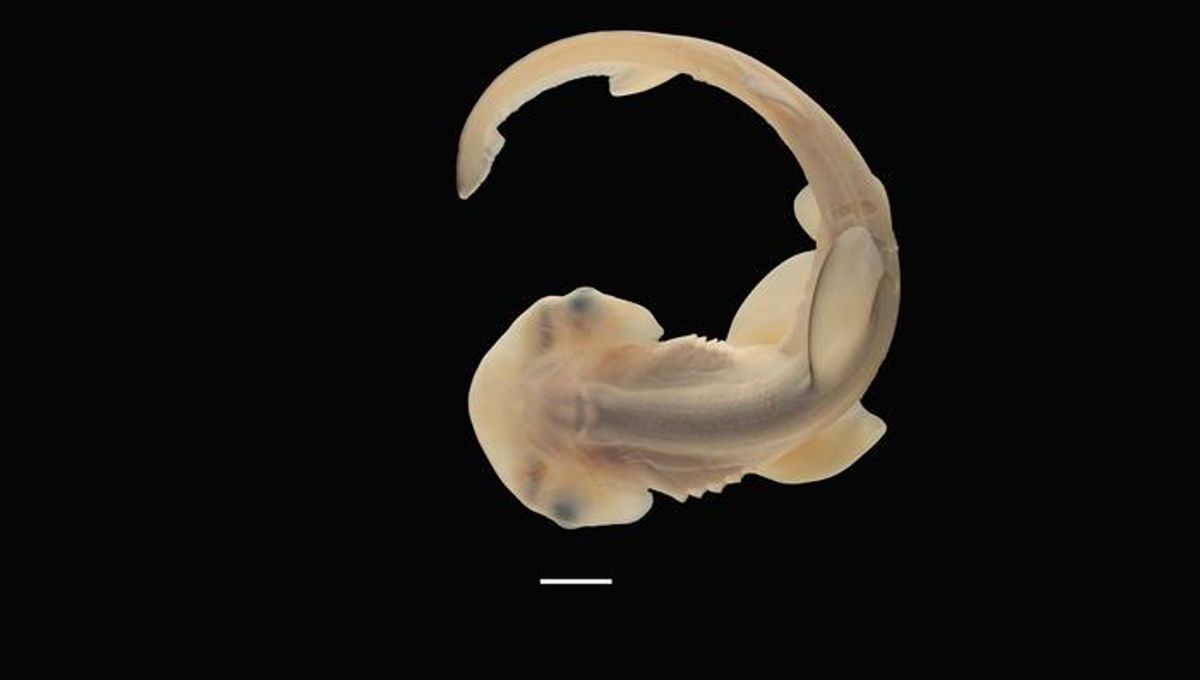
With their broad snouts and widely spaced eyes, hammerhead sharks are one of the strangest animals in the ocean. We have some idea, evolutionarily speaking, why they look the way they do, but quite how their distinctive hammers form has always been a mystery. Now, for the first – and possibly last – time, researchers have captured the process in a series of images, offering us a never-before-seen glimpse into the iconic shark’s development.
“This is a look at how monsters form,” Gareth Fraser, who supervised a new study presenting the findings, said in a statement. “This is an insight into the development of a wonder of nature that we haven’t seen before and may not be able to see again.”
Hammerheads are notoriously difficult to study – while most fish, including several shark species, lay eggs, hammerheads don’t, which makes watching their embryonic development particularly challenging. This isn’t helped by the fact that many species are endangered and so cannot be harvested and used to study their young.
As a result, relatively little is known about the development of the nine species of hammerhead.
In the new study, the team turned their attention to bonnethead sharks (Sphyrna tiburo), the smallest hammerhead species. Bonnetheads – which also happen to be the first-known omnivorous shark – are abundant in estuaries and nearshore waters in the Gulf of Mexico and the Western North Atlantic Ocean, making them ideal subjects for study.
To ensure that no additional sharks were harmed in their study, the researchers worked with embryos that were preserved from bonnetheads caught during previous research.
With access to embryos from multiple stages of development, they were able to piece together step-by-step footage of the elusive process of hammer formation for the first time.
“It’s the perfect qualities of the bonnethead that allowed us do it with this species,” said study author Steven Byrum. “This was a unique opportunity we may not be able to get for very much longer with bonnetheads and may not be able to get in any other species of hammerhead.”
The bonnethead’s head forms early in development, the team finds, but the hammer doesn’t appear until much later, around halfway through gestation. At this point, cartilage that will become the hammer expands laterally from around the nose, forming a broad, rounded shape.
In documenting this process for the first time, the researchers hope to create a “platform for future comparative developmental research both within sharks and across the phylogeny of vertebrates,” revealing even more about the origins and diversity of unusual craniofacial features in the animal kingdom.
The study is published in the journal Developmental Dynamics.
Source Link: Watch How The Hammerhead Shark Gets Its Hammer In First-Of-Its-Kind Video